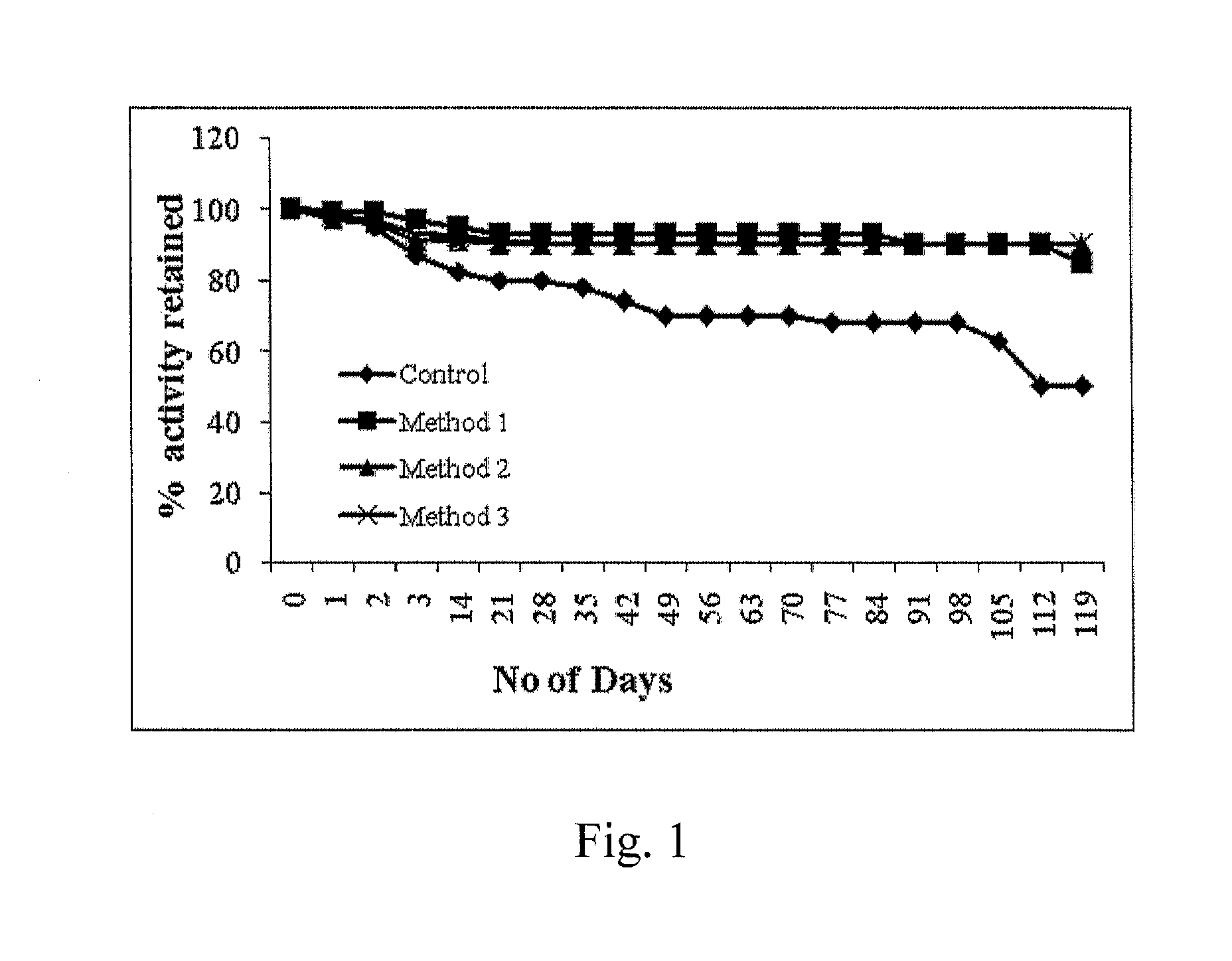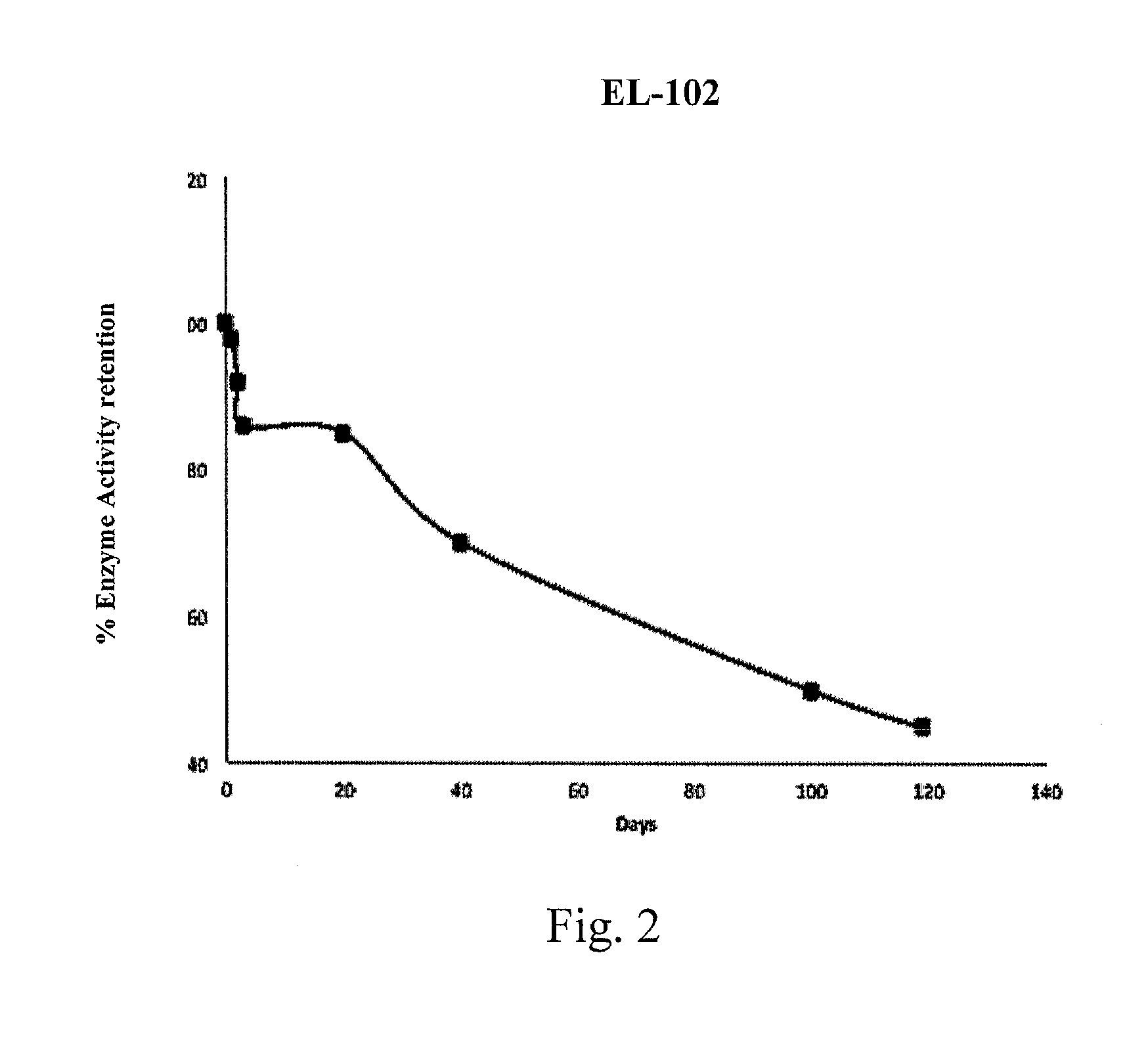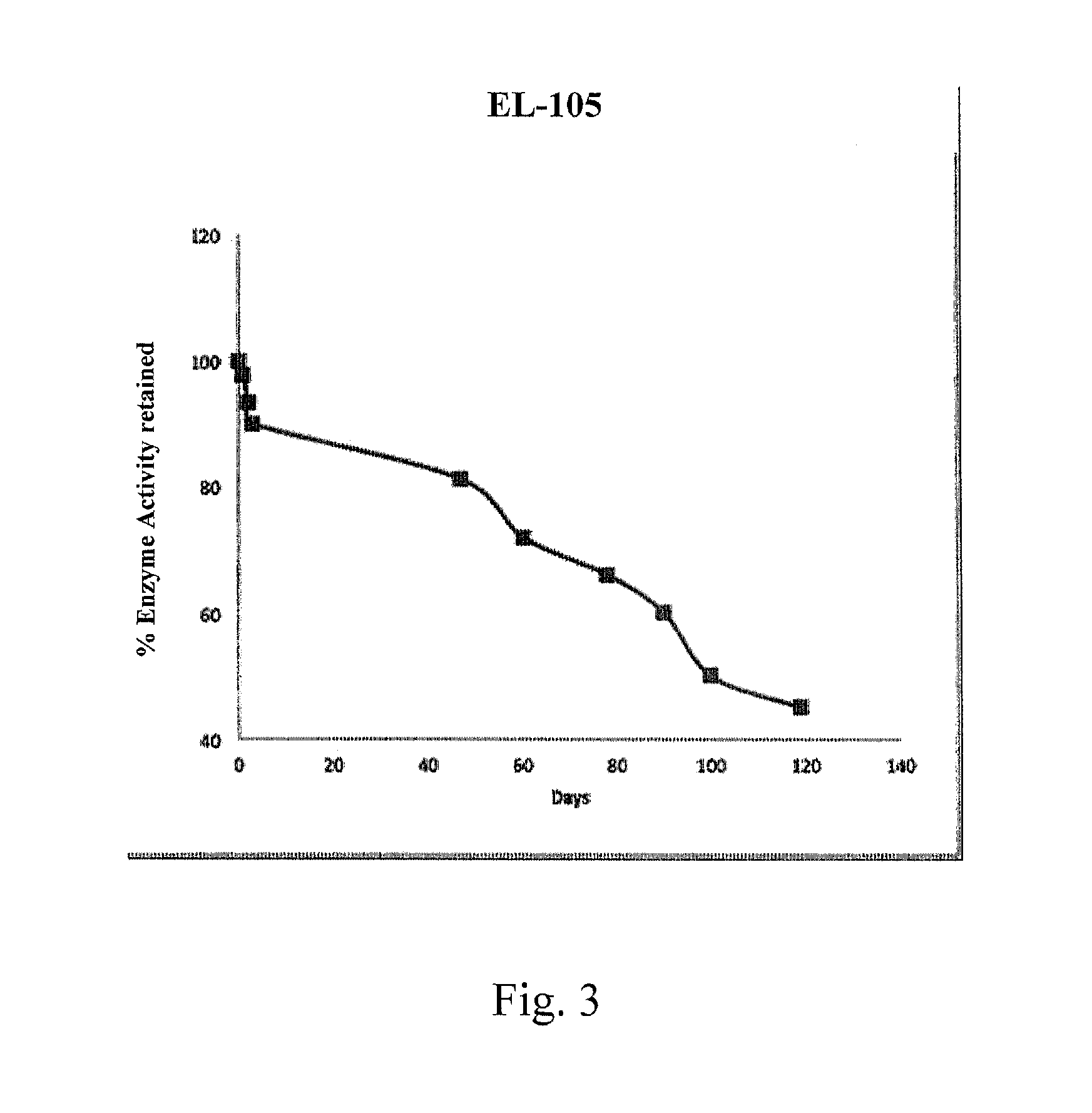Stabilized Acid Precursor and Acid-Enzyme Formulations for Drilling Mud Cake Removal
a technology of acid precursor and acidenzyme, which is applied in the direction of enzyme stabilisation, sealing/packing, and borehole/well accessories, etc., can solve the problems of small stability, low activity of long-term storage enzyme formulations, and big obstacle in current science, so as to improve shelf life and high stability
- Summary
- Abstract
- Description
- Claims
- Application Information
AI Technical Summary
Benefits of technology
Problems solved by technology
Method used
Image
Examples
example 1
[0048]The method of invention for the formulation generally involves the following: (1% to 30% w / w) saccharose, (1% to 10% w / w) sodium chloride or mixtures of sodium chloride and sodium ethanoate, (0.5% to 10% w / w) CaCl2 reagent was mixed followed by adding up the selected enzyme. Initial Enzyme dilution: Added 250 μl of enzyme sample to 12.25 ml 0.02 M sodium phosphate buffer. Further dilutions: Prepared serial dilutions of each sample by adding 250 μl of previous dilution to 2.25 ml of 0.02M sodium phosphate buffer. This dilution was done (with known dilution factor) in a manner, when the hydrolization product (maltose in this case) would produce color with DNS, absorbance upon incubation would fall within the stipulated range, as seen in FIG. 5.
According to the Lambert-Beer law, there is a linearity between activity and absorbance within this absorbance range and the Maltose standard curve is used to back calculate the amount of Maltose released, using the color (OD-Delta Absorba...
example 2
[0056]This example uses the same conditions as discussed above for Example 2. However, this Example is illustrative of results for stability when using industry standards for stabilizing enzymes, and shows that industry standard methods for preserving enzyme activity do not result in retaining acceptable stability levels. See FIGS. 2-4.
TABLE 2Method for the composition of in-situ acid precursor enzyme formulationIn-situ acidprecursor(% w / w),i.e.,EthyleneEnzymeSorbitolNaClNaOAcCaCl2glycolDMDescription(% w / w)(% w / w)(% w / w)(% w / w)(% w / w)diacetatewaterEL-102408NilNilNil7 53%EL-1054020 NilNil4712.5%EL-110(B)4030*NilNil0.5712.5%*sucrose
PUM
| Property | Measurement | Unit |
|---|---|---|
| Fraction | aaaaa | aaaaa |
| Fraction | aaaaa | aaaaa |
| Fraction | aaaaa | aaaaa |
Abstract
Description
Claims
Application Information
 Login to View More
Login to View More - R&D
- Intellectual Property
- Life Sciences
- Materials
- Tech Scout
- Unparalleled Data Quality
- Higher Quality Content
- 60% Fewer Hallucinations
Browse by: Latest US Patents, China's latest patents, Technical Efficacy Thesaurus, Application Domain, Technology Topic, Popular Technical Reports.
© 2025 PatSnap. All rights reserved.Legal|Privacy policy|Modern Slavery Act Transparency Statement|Sitemap|About US| Contact US: help@patsnap.com



